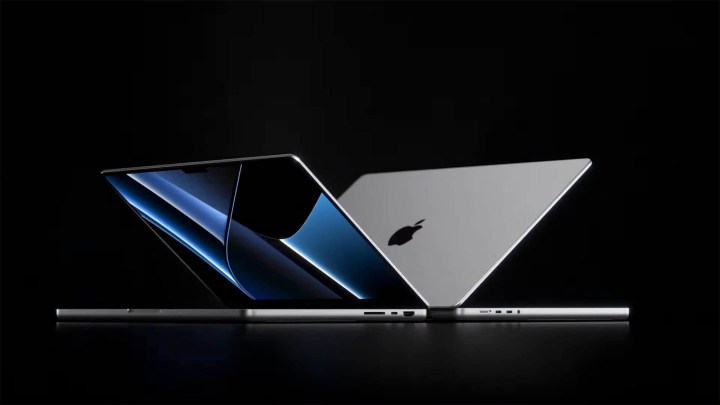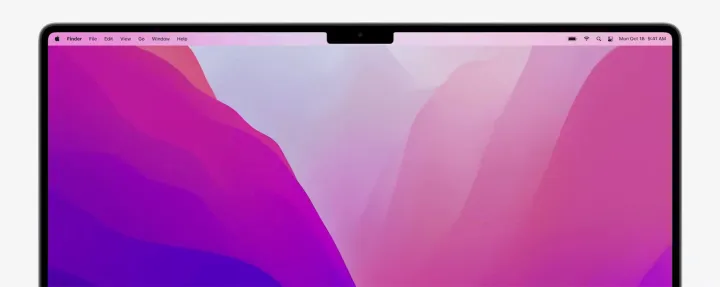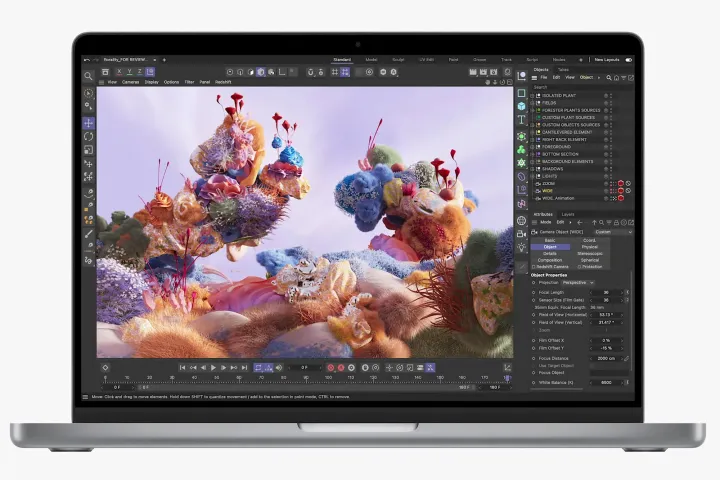MacBooks are typically seen as some of the best laptops money can buy, thanks to their combination of performance and longevity. It’s not uncommon for MacBooks to be running flawlessly years after purchase — so while their upfront costs are a bit steep, they’re great long-term investments.
That holds true for the MacBook Pro lineup, which comes in two sizes — 14 inches and 16 inches. Both are top-of-the-line computers designed to handle pretty much anything you can throw at them, offering access to the M3 chip, vibrant Liquid Retina XDR displays, and plenty of other high-end hardware.
However, there are a few differences between the two MacBook Pro models. And before you rush out and purchase one, it pays to know exactly what’s different between the MacBook Pro 16 and MacBook Pro 14. From their design and display to performance and portability, here’s a look at the MacBook Pro lineup.
Design

If you’ve taken a close look at the previous iterations of MacBooks, examining the new ones will reveal a few small changes. However, comparing the 14-inch to the 16-inch doesn’t uncover any massive design difference apart from the size of the notebooks.
Both Macs feature Apple’s new flat-edge design. A few years ago, the brand slowly started to revert its products to the design it used before, and the new MacBook Pros continue that trend. This means drifting away from the curved edges we’ve all grown used to.
However, the change is pretty minimal in the new MacBooks, as the edges don’t appear sharp. The main difference is that the top half of the notebook now matches the bottom half. You could easily compare this design choice to what Apple has done with the iPhone or the iPad Pro ranges.
In terms of cooling, both Macs utilize the same heat pipe design previously used in the MacBook Pro 16. The size of the heat sink has been increased by 35% to accommodate the powerful and heat-prone components found inside. For the 16-inch Mac, this is simply the retention of a previously used technology. For the smaller 14-inch model, this is a huge upgrade.

One thing Apple has said goodbye to with the new MacBooks is the Touch Bar. It was somewhat controversial and often left unused, so replacing it with a set of physical function keys may have been the right step for Apple.
Both laptops feature the Magic Keyboard, and whether you go with the 14-inch or the 16-inch model, the keyboard remains the same excellent version. They also benefit from an upgraded webcam, bringing much-needed 1080p quality to replace the 720p used in previous versions. The downside of the webcam? The notch at the top of the screen — although the apps do fold neatly around it, so it doesn’t obstruct the screen. Both laptops use Apple’s outstanding Force Touch haptic touchpad, and both use all the available space on the palm rest.
Display
While the two new Macs don’t vary much in terms of design from previous generations, they certainly do when it comes to their displays. Apple entered a new era with the release of these notebooks, upgrading their screens to utilize mini-LED technology. This applies to both models.
The use of mini-LED makes the Liquid Retina XDR displays of these new Macs brighter than ever. Around 10,000 LEDs, each smaller than 200 microns, are found within the thin, light, and colorful screens of the 14-inch and the 16-inch MacBook Pros.

Switching to mini-LEDs was a smart move by Apple. What we get here is a wider color gamut with rich, satisfyingly, vibrant shades, better contrast, and deeper blacks. These screens are essentially very close to OLEDs, but they shouldn’t suffer from the same degradation and burn-in problems that OLEDs sometimes do. They’re also incredibly bright, up to 1,600 nits when displaying high dynamic range (HDR) video. That makes them probably the best laptops around for consuming HDR content.
Both the screens are beautiful, but they’re not the same size. The new 14-inch and 16-inch MacBook Pros sport display resolutions of 3024 x 1964 and 3456 x 2234, respectively. This is an increase over the previous models. The aspect ratios are as unusual as the resolutions are, resulting in the 16-inch Mac having a 1.55:1 aspect ratio and the 14-inch having a 1.54:1.
Unusual as the sizing may be, it’s quite refreshing to see a taller screen on a laptop, and these Retina displays pack a lot of pixels to make them seem even bigger. The pixel density has been increased to 254 pixels per inch, sharpening the image and adding clarity.
As far as refresh rates go, there are no differences between the new MacBook Pros. ProMotion technology is in use here, meaning that the refresh rate is adapted to what you are currently doing. At the lowest level, you can expect a refresh rate of 24Hz, but it can go all the way up to a respectable 120Hz when necessary. This design choice will help preserve battery life while still allowing for smooth performance during gameplay and creative workflows.
Performance

It hasn’t been long since Apple introduced the M1 chip, switching from Intel-based systems to its own Apple silicon. To call that decision a hit would be an understatement, and things only get better from there with the introduction of the M3. The MacBook Pro 14 can now utilize the base M3, part of the move to discontinue the 13-inch MacBook Pro that used the base M1 and M2 processors. Both sizes can utilize the M3 Pro or the M3 Max chip, and they represent significant upgrades from their predecessors.
The new M3 Pro and M3 Max chips come with more cores and faster speeds. Apple’s engineers have outdone themselves with these chips, somehow combining fantastic performance with even better power consumption and good thermals. They’re fast, reliable, and great for productivity, creativity, and most other things you might want to throw their way.
Although MacBooks have never been particularly known for their gaming capabilities, these two new notebooks are even faster in a lot of titles, provided you’re not a hardcore gamer in need of a monster gaming PC — but then, not many users turn to Apple for gaming purposes anyway.
The M3 Pro and M3 Max versions available to the 14-inch and 16-inch models vary slightly. The 14-inch MacBook Pro starts at an 11-core CPU/14-core GPU M3 Pro, while the 16-inch model starts at the 12-core CPU/18-core GPU M3 Pro. At the high end, both models max out at the 16-core CPU/40-core GPU M3 Max.
That means that the 16-inch model is likely to be slightly faster than the 14-inch machine thanks to better thermals, but not by much. And by offering the base M3 processor in the 14-inch MacBook Pro, Apple was able to lower the price of entry.
Another change is that the 14-inch MacBook Pro can now access the same high-power mode as the 16-inch model when configured with the M3 Max. If you’re plugged in and don’t mind some extra heat and fan noise, this power mode offers a meaningful uptick in performance.

Not everything is perfect with the new processors, however. The M3 Pro has switched up the core counts, with the 12-core M3 Pro having just six performance cores and six efficiency cores compared to the M2 Pro’s eight performance cores and four efficiency cores. And memory bandwidth has been reduced from 200 GB/s to 150 GB/s. We haven’t benchmarked the M3 Pro yet, but it remains to be seen if the base M3 Pro is all that much faster than the base M2 Pro.
Nevertheless, alongside the beastly processor and integrated graphics, we’re getting an upgrade in RAM. Both notebooks support up to 128GB of memory with the M3 Max, up to 36GB with the M3 Pro, and up to 24GB with the M3. One change is that the base M3 14-inch MacBook Pro comes with just 8GB of RAM rather than the 18GB starting point with the M3 Pro and M3 Max. There has been a bit of controversy around the introduction of an 8Gb base version of the MacBook Pro 14, with Apple claiming that 8GB is as fast as 16GB on other platforms.
That may not be true, though, and some testing has shown that 8GB might represent a bottleneck. That’s been even more controversial given that it costs $200 to upgrade the base M3 14-inch MacBook Pro to 16GB. On the other hand, the 18GB that comes with the M3 Pro and M3 Max should be sufficient for less demanding users who don’t want to splurge.
In terms of storage, the standard is 512GB for both the 14-inch and the 16-inch models. It can be upgraded if you find yourself in need of extra space for all your files. Note that the new base storage doesn’t use single-NAND memory compared to the larger SSDs that use double-NAND memory as seen in the M2 models, so there’s no performance compromise from going with the base storage.
Portability
The new MacBook Pro 14 is similar in size to the MacBook 13 that it is replacing. Measuring 15.5 mm and weighing 3.5 pounds, the notebook is thin and portable. The increase in the display size stems from the fact that Apple slimmed down the bezels and got rid of the MacBook Pro label at the bottom.
Unsurprisingly, the 16-inch Mac is larger. Measuring 16.88 mm and weighing 4.7 pounds, it’s slightly more of a burden to carry around, but the larger size is made up for by the bigger display. It’s hard to pick a winner here — only you know whether you care more about better portability or a larger screen.
For most people, the difference in sizing will not be a deal breaker one way or the other. Both notebooks are relatively easy enough to carry. According to Apple, the 14-inch MacBook Pro has worse battery life, 18 hours compared to 22 hours with the 16-inch model. That, more than the size, might affect the final decision. More on that below.
Ports
Many MacBook users have been longing for the return of the ports. At some point in 2016, Apple decided to rid its notebooks of all ports aside from USB-C. Fortunately, 2021 was when things are finally starting to return to normal, and the new notebooks sport a highly anticipated list of ports.
We got the return of MagSafe, a technology that was on the brink of being forgotten but was always very missed. MagSafe magnetically attaches the charging cable to your Mac. Should you happen to pull on the cord, the tech will detach itself as opposed to pulling your notebook toward an early demise. As an added bonus, Apple gave MagSafe a face-lift and improved the charging speeds compared to previous Macs.

The laptops both feature an HDMI port, several Thunderbolt 4 ports, and a full-size SD card reader, which is something we haven’t seen in a MacBook for years. Note that the base M3 14-inch MacBook Pro has just two Thunderbolt 4 ports compared to three on the other models. The ports are evenly spread across the notebook, with one or two Thunderbolts and a MagSafe on the left side, and an HDMI port, another Thunderbolt port, and the SD card reader on the right.
Note that the base M3 14-inch MacBook Pro supports just one external display, while the M3 Pro supports up to two external displays and the M3 Max supports up to four external displays. Anyone looking for the ultimate multimonitor setup should keep this in mind. Also, both laptops have been updated to Wi-Fi 6E and Bluetooth 5.3, so both benefit from faster wireless connectivity.
This is a definite upgrade over the previous MacBooks. There is no winner in this category, and if we had to pick one, we’d say that both the 14-inch and 16-inch Macs are winners. They feature the same set of ports, bringing some much-needed relief to Apple fans who often needed to buy extra dongles to make the most out of their notebook.
Battery life
Each of the new MacBook Pros has a different battery, but both present improvements over the previous generation.
The MacBook Pro 16-inch has a battery rated at 100 watts. Combined with the use of Apple silicon in this laptop, which has already tremendously increased battery life compared to older, Intel-based systems, we’re in for a treat.

Compared to the previous MacBook Pro 16, the battery in this model is slightly smaller, but that has no negative impact on the battery life. Users can expect at least 22 hours during light computing.
The smaller, 14-inch MacBook Pro also features an upgrade in the battery over its 13-inch predecessor. The chassis allows for the use of a larger battery, and Apple made the most of it by installing one that’s rated at 70 watts.
When it comes to battery life on the 14-inch Mac, we can expect it to be shorter than what the 16-inch has to offer. It’s no wonder, considering that this notebook is smaller and just doesn’t have the space for a battery as large as the 16-inch. The 14-inch MacBook Pro should be able to last through around 18 hours of video playback before it’s time to plug it back in.
Laptop users know full well that you don’t always get the most out of your notebook when not connected to a source of power. Apple is out to dispel that notion with the addition of High-Power Mode. This is an optional setting, present in both laptops, that lets users boost the notebook’s performance even when it’s not connected.
On the other end of the scale, there’s the Low-Power Mode, which still lets you preserve some battery life by turning off unnecessary processes.
Pricing
Not many people turn to Apple products for the price — the brand remains aware of this by pricing both notebooks higher than many competitors. While both offer excellent quality, they’re not exactly cheap. Despite that, it’s hard to deny that by using the new chips, Apple managed to make these notebooks a great value for the money.
The 14-inch MacBook Pro is slightly more expensive than the 13-inch version that it replaced. It’s difficult to complain about this, as this notebook does offer a larger display while remaining virtually the same in size. The performance that it provides is also worth the higher price tag.
If you want to get your hands on the latest MacBook Pro 14, be prepared to spend at least $1,599 for the base M3 configuration, which is the only one that offers an M3 with just eight CPU cores.
The 16-inch MacBook Pro is priced higher than the previous version. To benefit from the various improvements that it provides, customers have to spend at least $2,499.
Both the laptops can be upgraded by adding more RAM and storage, so this could drive up the price a little bit further.
The 16-inch MacBook Pro is the winner here

We recommend the 16-inch MacBook Pro, but not by a huge margin.
This time around, more than ever, it’s difficult to pinpoint one true winner between these two MacBook Pros. This is because, in a lot of aspects, they are virtually the same.
Except for the base M3 14-inch model, both of them run on (mostly) the same chips and have stunning displays, as well as the same number of ports, the same amount of storage, and the same general design.
While both are very close, the 16-inch MacBook Pro does offer theoretically much better performance and a larger 16-inch display. In addition, it also has a longer battery life and improved airflow.
Editors' Recommendations
- The XPS 16 is fighting an uphill battle against the MacBook Pro
- The best MacBook to buy in 2024
- Best laptop deals: Save on the Dell XPS 14, MacBook Pro 16 and more
- Best Apple deals: Save on AirPods, Apple Watch, iPad, MacBook
- The MacBook Air 15 vs. MacBook Pro 14: the easy way to decide




